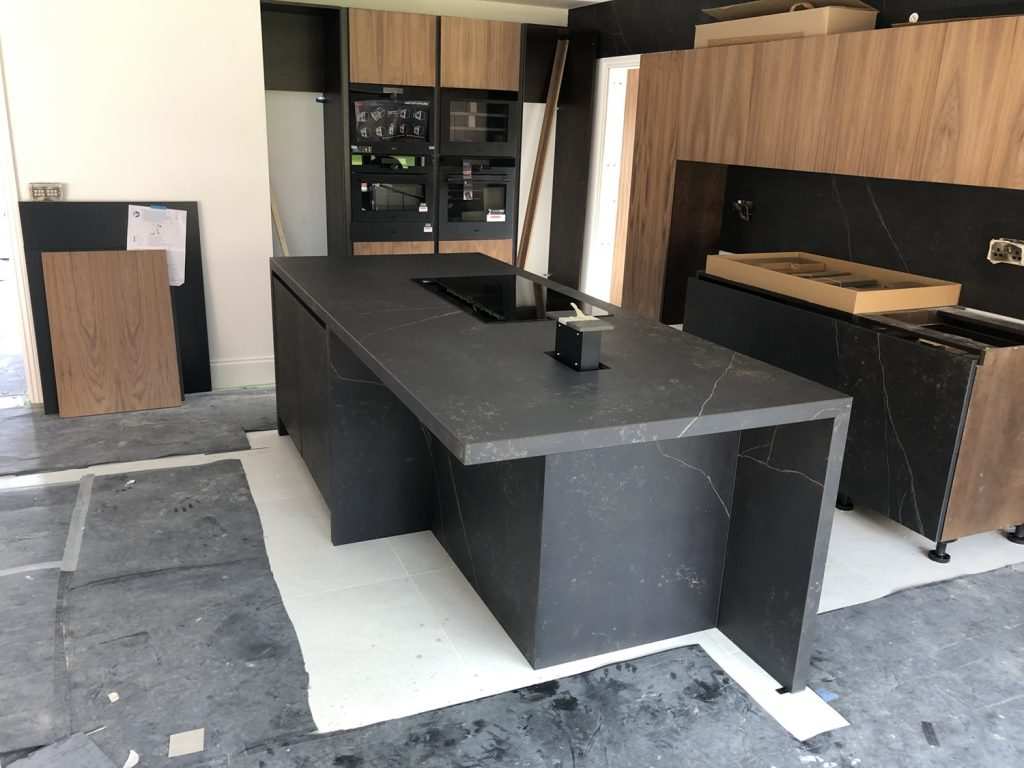Stone worktops are more than just functional surfaces; they are a central design feature in kitchens and bathrooms, setting the tone for the entire space.
While people often focus on the choice of stone, colour, and finish, the edge profile is an equally important yet frequently overlooked detail. The edge profile is the shaping of the stone’s outer edge, and it significantly influences both the worktop’s visual appeal and its practical usability.
Edge profiles come in a wide variety of styles, from sleek and simple to intricate and ornate. Whether you’re looking to create a modern, minimalist kitchen or a timeless, elegant bathroom, the edge profile you choose plays a crucial role in bringing your design vision to life.
Beyond aesthetics, edge profiles also impact the durability and functionality of the worktop, making it a critical decision in the customisation process.
What Are Edge Profiles?
Edge profiles refer to the shape or contour of the edges of a stone worktop. They are crafted during the fabrication process using specialised tools and techniques, allowing for precise shaping and finishing.
The choice of an edge profile involves more than just personal preference; it also depends on the type of stone, the overall design theme, and how the worktop will be used. Whether the edge is sharp, rounded, or decorative, it defines the worktop’s character.
A key factor in selecting an edge profile is the material of the worktop. Some stones, such as granite and quartz, can accommodate a wide range of profiles, while softer materials like marble may require more care to prevent chipping.
Additionally, the edge profile affects the perception of the worktop’s thickness and weight. A carefully chosen edge profile can make a slim slab look robust or give a thick slab a light, elegant appearance.

Aesthetic Impact of Edge Profiles
Edge profiles play a pivotal role in defining the overall look of a stone worktop. For modern kitchens and bathrooms, sleek and clean profiles such as square or pencil edges create a contemporary feel.
These minimalist styles allow the natural beauty of the stone to take centre stage while maintaining a streamlined appearance. On the other hand, for classic or luxurious designs, ornate profiles like ogee or full bullnose add an element of sophistication and grandeur.
The choice of edge profile can also enhance the visual harmony of the room. For example, a subtle bevelled edge can complement geometric cabinetry, while a rounded edge can soften a room with angular design elements.
Even details such as the thickness and finish of the edge can dramatically impact the overall aesthetic. Polished edges enhance the stone’s natural shine, while matte finishes offer a more understated, modern look.
Functional Benefits of Edge Profiles
While edge profiles are an aesthetic feature, they also have practical implications. Rounded edges, for instance, are not only visually appealing but also safer, especially in homes with children.
Sharp-edged profiles, while stylish, can pose a risk of injury in busy kitchens or high-traffic areas.
Choosing the right profile can make the worktop safer and more user-friendly without compromising on style.
Edge profiles also influence the durability of a worktop. Certain profiles, such as those with rounded or eased edges, are less prone to chipping compared to sharp or intricate designs. This is particularly important for natural stones like marble, which are more susceptible to wear and tear.
Additionally, edge profiles can simplify cleaning and maintenance. For instance, a simple square or eased edge is easier to clean than a decorative edge with grooves and curves that can collect dirt and debris.

Choosing the Right Edge Profile for Your Worktop
Selecting the perfect edge profile involves balancing design preferences, lifestyle needs, and practical considerations. The overall style of the room is a key factor; for instance, modern spaces may benefit from sleek, straight edges, while traditional or vintage-inspired designs might call for more intricate profiles.
Lifestyle also plays a role—families with young children might prioritise safety, while professional chefs might focus on durability.
Budget is another important consideration, as more complex edge profiles typically require additional labour and craftsmanship, increasing the cost. Consulting with a professional fabricator is invaluable in this process.
They can provide samples, offer advice on what works best with your chosen material, and help you visualise how different profiles will look in your space. This ensures that the edge profile not only meets your aesthetic goals but also aligns with your practical needs.
Conclusion
Edge profiles are a small detail that makes a big impact on the overall look and functionality of stone worktops. From shaping the aesthetics to enhancing safety and durability, the edge profile is a crucial aspect of customising a worktop to suit your needs and style.
By carefully considering the design of your space, your lifestyle requirements, and the characteristics of your chosen material, you can select an edge profile that elevates the beauty and practicality of your stone worktop.
When planning your next kitchen or bathroom project, don’t underestimate the importance of the edge profile. It’s the finishing touch that transforms a standard worktop into a tailored masterpiece.
For expert guidance and a wide range of options, contact us today. Together, we’ll create a stone worktop that not only looks stunning but also fits seamlessly into your home and lifestyle.

